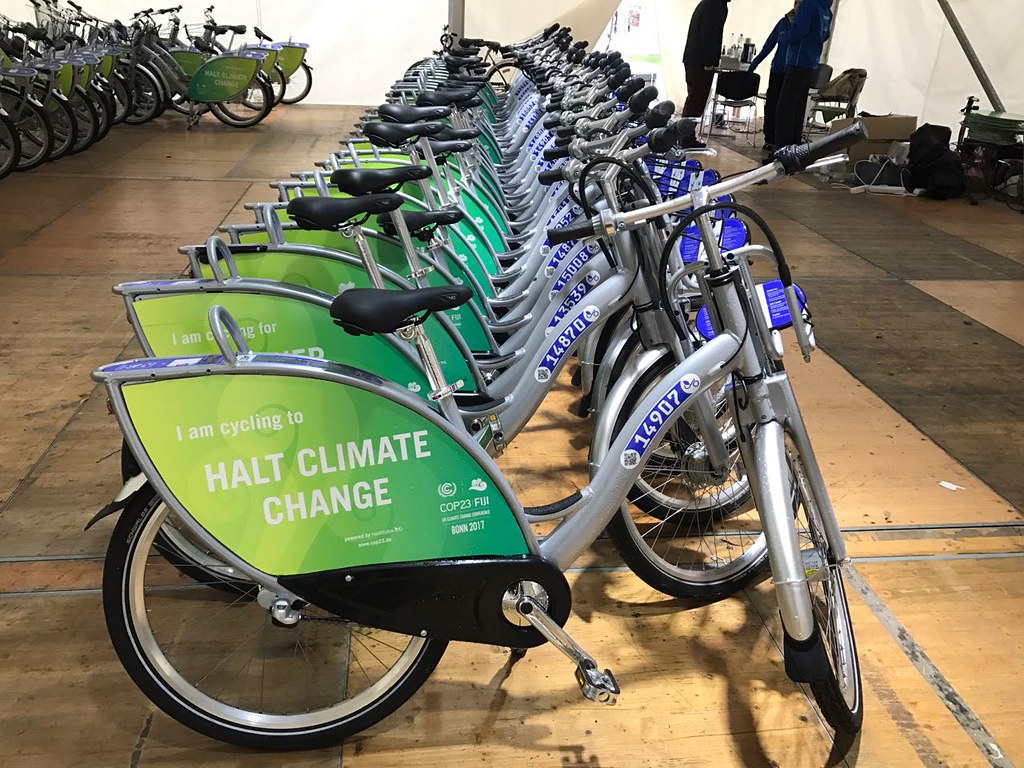2024 will be exciting: in addition to questions about measuring campaign success and the advance of artificial intelligence, sustainability is one of the biggest challenges in the field of advertising. So what is important?
According to a survey conducted by the Organization of Advertisers in the German Brands Association (OWM), 61% of respondents expect the economic situation to deteriorate and therefore also expect budget adjustments: 48% anticipate cuts, while 11% expect increases. In any case, sustainability will be the focus this year and will influence the advertising measures of companies in all sectors. The following tips will help advertisers to make 2024 a sustainable and successful year.
Sustainable advertising – what does that mean?
Of course, the energy and resource consumption for the production of advertising media is higher than for a digital advertisement, but here too it is important to take a closer look and include the consumer’s end devices, for example. According to the German Environmental Aid (DUH), outdoor advertising has comparatively low CO2 emissions given its reach. The trade association for outdoor advertising puts the CO2 footprint at 3 to 30 grams per 1,000 contact points. However, it is not emissions and consumption that count in the assessment, but also the use and disposal of the advertising media. Advertising media such as advertising pillars, Mega Lights and City Light posters are specially designed for advertising purposes. Other advertising media, however, fulfill a further purpose. This is the case with public garbage cans or means of transport, for example. If you want to meet the rising expectations of society and politics, you not only have to demonstrate responsible business practices, but also act sustainably in your marketing.
1. focus on sustainability initiatives
For companies, sustainable business practices are becoming mandatory from a consumer perspective as well as by law. Responsibility for this lies with the management, in sustainability management, but also in the marketing department. In 2024, teams will need to be trained in what real sustainability means and not just greenwashing. Advertising media that are already low-emission and climate-friendly per se, such as public transport, bicycles or public waste garbage cans, will also be used more frequently. On top of this, all campaigns should have a low carbon footprint and promote climate-friendly consumer behavior.
2. added value for customers – and therefore for the brand
Recyclability and the added value of products, including their marketing, are highly valued. Mere advertising and discounts are passé. Instead, it is important to link your own brand with a benefit for the environment and society. Here it is crucial for advertisers to find out exactly what makes their target group tick and to communicate targeted benefits in conjunction with a value proposition: For example, the organizer of the largest street dance contest, which brought together dance talents from all over the world, promoted the final via advertising on bike-sharing bicycles at the venue. All event participants were given free minutes to cycle from their accommodation in the surrounding area to the venue.
3. variance in advertising materials and media
In a world where the amount of information is constantly increasing, innovation and creativity are more important than ever to stand out and capture the audience’s attention – across a variety of touchpoints. For example, despite the dominance of digital advertising, urban spaces offer underestimated potential in the media mix – for example with mobile advertising media such as bicycles, e-scooters and public transport. Eye-catching, recyclable advertising elements, such as a giant chocolate bar or a life-size 3D drinks bottle, can achieve impressive effects. The development of such innovative concepts requires a critical examination of existing advertising practices and a creative rethink, especially in the context of sustainability.
Conclusion: Sustainable advertising, but the right way
In a changing advertising market in 2024, it is crucial to move away from traditional approaches and focus on sustainability in particular. For example, the European Football Championship in June and July, which is obviously set to be the most sustainable of all time, provides a framework for attracting attention through appropriate advertising initiatives. Advertisers need to develop innovative and creative campaigns that not only effectively reach the target audience, but also demonstrate environmental and social responsibility. Careful budget allocation and performance measurement are essential to establish sustainable advertising not just as a trend, but as an essential component of successful marketing strategies.
Author info
Jan Gewinner is Head of Business Development Media & Services at nextbike by TIER (www.nextbike.net), the European bike-sharing market leader that stands for a multimodal and socially responsible mobility transition. He has held various positions in sales & sales marketing in the field of outdoor advertising and ambient media for 19 years. Most recently, he worked at Wall GmbH for six years before moving to nextbike in 2016, where he is now responsible for B2B sales with a focus on bicycle advertising.

